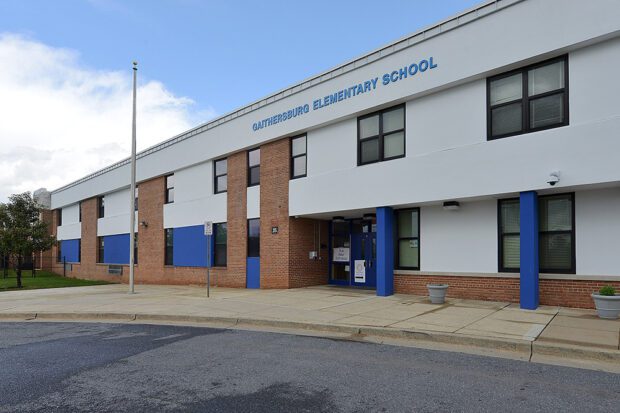
Given the flurry of news stories that appear every day, it’s not surprising that recent developments in the Department of Education don’t often get much attention.
But maybe they should.
A recent ProPublica article by Megan O’Matz and Jennifer Smith Richards traces a disquieting trajectory that the agency has been taking. If continued, its actions will result in a profound transformation of this country’s educational priorities and practices.
Since Linda McMahon became the department’s head earlier this year, big changes have been under way.
ProPublica provides an extensive list of its activities and initiatives.
Among them:
Officials in the agency have hollowed out the department’s civil rights division, which has worked to make sure that young people can attend public schools without being discriminated against.
They’ve cut back on protections for LGBTQ+ students and students of color and opened investigations of districts and states that it claims are still accommodating transgender students.
They’ve often encouraged states to help poor and at-risk students to attend private schools using federal dollars.
They’ve also ended an official policy mandating that schools offer language help and related services for English learners. O’Matz and Richards note that this new stance ignores federal law.
The department has also established a fund for what it calls “patriotic education”—which, according to its critics, de-emphasizes such aspects of America’s past as slavery.
At the same time, it seeks to expand the presence of conservative Christianity in schools. McMahon helped to found the America First Policy Institute in 2021, and its 2023 policy paper, “Biblical Foundations,” seeks to eliminate the separation of church and state and “plant Jesus in every space.”
One area of particular concern for advocates of public education: changes in Title I grants—funds that focus on support for students from low-income families.
The department wants to rework how districts and states can use these grants. For example, it’s already argued that such money could be used for private tutoring.
Public school advocates are concerned that, in the future, Title I assistance could be employed in ways that weaken public schools—such as private school vouchers.
If such actions are a far cry from the department’s former practices, there’s a reason for that.
At least 20 political appointees from right-wing groups have now been brought on board, all of them apparently interested in shrinking the footprint of public education.
One of them is Lindsey Burke, the lead author of Project 2025’s education section.
In an interview in April, Burke stated that, in years to come, “We’re going to have a lot of empty school buildings.”
Given that more than 80% of elementary and secondary students in the United States now attend traditional public schools, this would herald a momentous shift in America’s educational landscape.
As their public statements make clear, these new appointees want to encourage and enable more families to exit public schools.
One way to accomplish this: growing programs that provide financial support to parents so that they can assemble customized educational plans for their children. Rather than turning to public schools, families would use these resources to pay for such costs as private school tuition, online learning, tutors and transportation.
How might all of these initiatives impact the nature of K-12 education as we’ve come to know it?
For starters, those in charge of the current Department of Education would downsize oversight of schools and districts. The monitoring of actual teaching practices and student learning would be significantly curtailed. Instead, the marketplace would decide what counts as successful practices—for example, by means of parent reviews.
Burke has made it clear that she opposes “any sort of regulation.”
Beyond that, smaller cities and rural areas would face new challenges. Both depend more heavily on public education, given that private and charter schools are less likely to be close by.
Because charter schools play a significant role in the agency’s vision of America’s educational future, it’s illuminating to look at what some recent in-depth studies of charters have uncovered.
In his book The Privateers, Josh Cowen, an education policy professor at Michigan State University, reviews decades of high-quality education research.
His finding: The use of school vouchers to promote charter schools hasn’t resulted in superior learning outcomes. Two major studies between 2005 and 2010 found that vouchers had no effect whatsoever on student learning.
Beginning in 2013, however, several scholars concluded that they’ve actually caused “some of the largest academic declines on record in education research.”
In addition, Cowen points out, charters have often cherry-picked students, sometimes nudging out disabled students or learners who had below-average results on standardized exams.
Charters are also often unstable, as shown in “Doomed to Fail: An Analysis of Charter Closures from 1998–2022,” a report that the Network for Public Education released in mid-October 2024.
The study draws on information from the Common Core of Data, the leading database on non-private elementary and secondary education in the United States, and it paints a sobering portrait of the failure rates of charter schools.
More than 25% of charters have shut their doors within the first five years of their existence. Almost 40% have closed within 10 years, and almost half have fizzled within 15 years. Such rates are far higher than closures among public schools.
Leading reasons for such failures include low enrollment (46.8%), fraud and/or mismanagement (21.6%) and academic issues (13.7%).
Thus, for more than three decades now, “charter closures have broken their promises to more than one million children whose parents believed they had enrolled their children in a better, stable alternative to their local public school.”
Burke and her colleagues might welcome a vast number of desolate public school sites, but it’s far from clear that alternative educational forms such as charters are more desirable.
A steady, long-term commitment to using best practices in education—including a rock-solid commitment to serve all students—would be a far better strategy than an intransigent focus on privatization at all costs.
